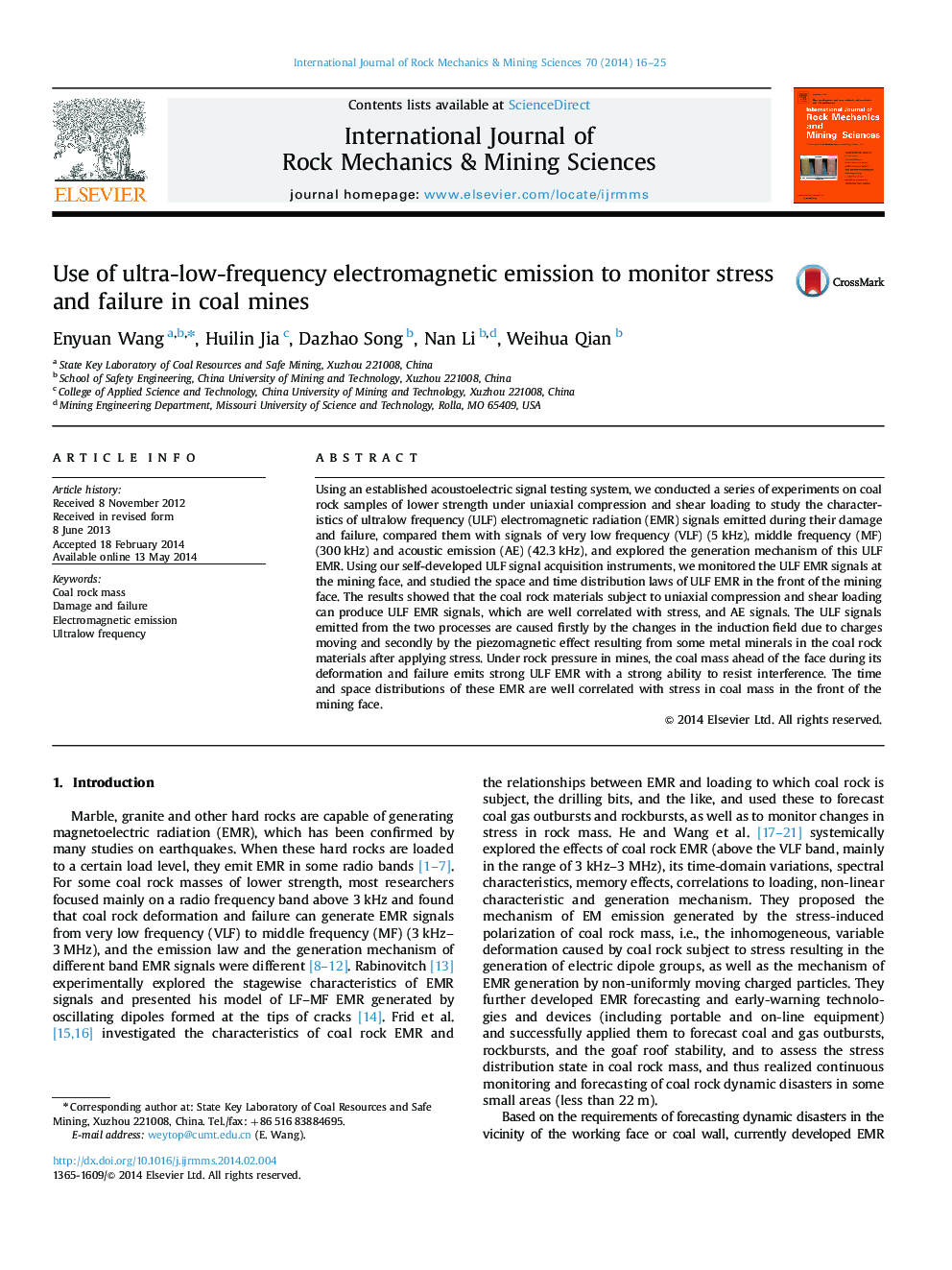| Article ID | Journal | Published Year | Pages | File Type |
|---|---|---|---|---|
| 809081 | International Journal of Rock Mechanics and Mining Sciences | 2014 | 10 Pages |
•Coal rock subject to uniaxial compression and shear loading can produce ULF EMR signals.•It is mainly generated by the low-speed diffusion of charges and the change in the amount.•We use our self-developed ULF signal acquisition instrument in field applications.
Using an established acoustoelectric signal testing system, we conducted a series of experiments on coal rock samples of lower strength under uniaxial compression and shear loading to study the characteristics of ultralow frequency (ULF) electromagnetic radiation (EMR) signals emitted during their damage and failure, compared them with signals of very low frequency (VLF) (5 kHz), middle frequency (MF) (300 kHz) and acoustic emission (AE) (42.3 kHz), and explored the generation mechanism of this ULF EMR. Using our self-developed ULF signal acquisition instruments, we monitored the ULF EMR signals at the mining face, and studied the space and time distribution laws of ULF EMR in the front of the mining face. The results showed that the coal rock materials subject to uniaxial compression and shear loading can produce ULF EMR signals, which are well correlated with stress, and AE signals. The ULF signals emitted from the two processes are caused firstly by the changes in the induction field due to charges moving and secondly by the piezomagnetic effect resulting from some metal minerals in the coal rock materials after applying stress. Under rock pressure in mines, the coal mass ahead of the face during its deformation and failure emits strong ULF EMR with a strong ability to resist interference. The time and space distributions of these EMR are well correlated with stress in coal mass in the front of the mining face.
